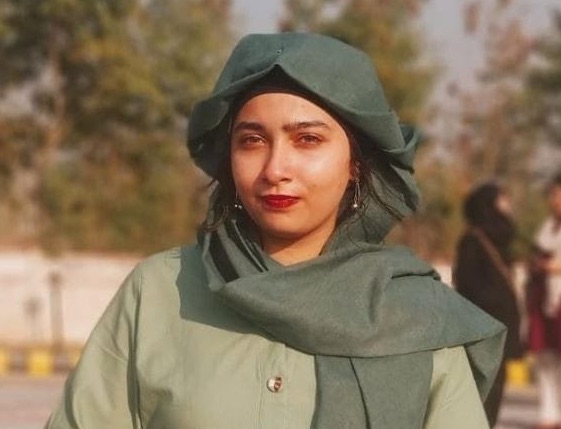| Wed. July 16, 2025 | |

|
|
|
 Contextualizing Subaltern Subaltern is a colonial/post-colonial terminology termed by Antonio Gramsci[1] to highlight and underscore the cultural hegemony of some particular group of people who tend to exclude and eliminate other groups from the socio-political and economic institutions of the society. The agency of the subaltern is repudiated and their voices are shunned in the political fabrics of colonies. Post-year 1970, this term is designated to the previously colonized subjects of British colonialists in the Indian subcontinent. Subaltern also serves as a way of retrospective inquiry for the Orients and Non-Western people in the intellectual discourse. As of today, the demographics and the socio-political fabric of the subcontinent show a completely different canvas: Post-decolonization, India, Pakistan, and Bangladesh have emerged in the geopolitical arena. The British Colonization ended in the year 1947, however, the term Subaltern, apart from the colonial discourse, is still relevant in the political fabric of Majoritarian India where Islamophobia stands as a real Subaltern today under the hegemonic stature of lethal Hindutva ideology (an ideology of cultural nationalism/idealism) in the country. Hindutva, a Culturally Hegemonic Ideology Hindutva is a coercive and hegemonic ideology of cultural nationalism which transcends the basic notion of power politics and religious supremacy. In order to understand Hindutva, it is crucial to trace its history and the political circumstances in which it was born. The condescending Hindutva was established during the anti-colonial struggle of the people of the subcontinent against the British Colonial Empire. While establishing the tenets of Hindutva, Damodar Savarkar[2] outlined the way of life by stretching the binary logic of Us vs. Them (Self vs. others) delineating the British as outsiders and invaders jeopardizing the purity of ‘Punyabhoomi’[3] holy land of Hindus, Hindustan. These constructs of Us vs. Them, based on condescending brahminical culture, established by Savarkar were reinforced and re-enjoined by his followers M.S Golwalker and K.B Hedgewar to maintain power. This ideology, which emerged as the resistance ideology against colonialism transformed into a homogenizing venture of ‘Hindu Nationalism’ victims to which today are Indian minorities specifically Muslims and lower castes of Hindus. Understanding Islamophobia in India from Bhabha’s Third Space of Enunciation: There subsists a methodological quandary on how to investigate Islamophobia in the Indian political setting. The islamophobic stereotypes and reductionist approaches towards Islam in India can be understood by Homi K. Bhabha’s hybrid ‘third space of enunciation.’[4] Islamophobia in India is fastened with social construction and interpretation of the Hindutva aims in the country and new security paradigm regarding terrorism rise. The islamophobes in India: the political leaders, and media journalists are shaping the reductionist narrative maintaining Islamophobic tropes such as Muslims are anti-democratic, extremism-oriented informed by Quran and Sunnah, misogynistic, and expansionist against Indian Nationalism. Not only this, the respective interpretation of Islam and Muslims is also effectively exported to the global community by the Indian Foreign Office which is manifested ostensibly by the rhetorics presented by Indian Foreign Minister S. Jaishankar on international platforms. Deconstructing Islamophobia, a Threatening Other The islamophobic discourse in India maintains that Muslims and their religion pose a consequential and existential menace to Hindus’ national security and purity. The majoritarian code of Hindutva asserts to renounce all other cultures, races, traditions, and ethnicities and assimilate them under one dominant Hindu Identity. Manifestation of this code condensed Christians, Dalits, and Muslims as ‘Others’ in the context of which it is imperative for them to forgo their identity by assimilating into the religious and cultural space of Hinduism. In the perspective of this principle, the Hindutva members not only reach out to non-Hindu especially Muslim Minorities at grass root level but also these zealots are campaigning for the marginalization and isolation of Muslim minorities. In the tribunal report of the concerned citizens’ post-Gujrat riots, it was maintained: “The Bajrang Dal paid them [Dalits] salaries of Rs. 3,000-4,000/month to join camps where indoctrination against Muslims and arms training were given. These activists organized public functions in which swords and Trishuls [trident daggers, symbols of Lord Shiva] were distributed with lots of publicity. In the private meetings activists were told, more explicitly, the Trishuls are to be used against Muslims whenever there was a riot or a fight. If you killed Muslims, the organization was there to protect you from any penal consequences. If something happened to you, the organization was there to take care of your family. If you did get arrested during the riots, all you had to do was to show your Bajrang Dal membership card and the police were sure to let you go.”[5] Modi and the Strengthening of the Islamophobic Discourse: Narendra Damodardas Modi, Indian Prime Minister, is the leader of the Bharatiya Janta Party (BJP) which is an ultra-nationalist modern rightwing Hindutva-driven political party. Since Modi’s occupation of power, the rise in Islamophobic events and hateful content has seen a burgeoning rise of 500 percent according to NDTV.[6] Modi’s majoritarian posture towards India’s curriculum, social media (particularly Twitter and Facebook),[7] Muslim representation in the Indian parliament, and political activities has consolidated the debate of Islamophobia as a contemporary Subaltern in Indian political space while essentializing Muslims by associating them with reasons behind every negative happening in the country. With the enforcement of the discriminatory Citizenship Amendment Act 2019,[8] anti-Muslim mobs,[9] the 2020 New Delhi clashes,[10] profane remarks on live media against Prophet PBUH,[11] banning niqabs in schools,[12] Kashmir Files (Islamophobic narrative building),[13] and many more events, the discrimination and hatred against Islam are at the apex and have become the new normal. Conclusion: Communal Politics is not alien to the Indian political structure. One consequential premise of Indian communal politics is Islamophobia, the contemporary subaltern. With Modi coming to power, the debate has been further essentialized with the reinforcement of the islamophobic tropes. The future of this subaltern is mercurial as the Indian national politics under BJP never seems to exit the pungent ring of Ultra-Hindu Nationalism surrounding it. Ayesha Zafar is a sophomore at National Defence University, Islamabad, Pakistan. She is a researcher and a student of International Relations with a keen interest in foreign policy analysis, geopolitics, and concepts of the emerging world (particularly climate change and technological advancement). She has published ten research pieces online in the geopolitics and cyber security niches.
[1] “Subaltern Social Groups.” Columbia University Press, February 22, 2017. http://cup.columbia.edu/book/subaltern-social-groups/9780231190398. [2] “Veer Savarkar: Ideologue of Hindutva.” MANAS. Accessed January 2, 2023. https://southasia.ucla.edu/history-politics/hindu-rashtra/veer-savarkar-ideologue-hindutva/.
[3] “What Hindutva Seeks.” The Indian Express, March 29, 2014. https://indianexpress.com/article/opinion/columns/what-hindutva-seeks/. [4] “Mead Art Museumthe Third Space: Cultural Identity Today.” The Third Space: Cultural Identity Today | 2008 | Amherst College. Accessed January 2, 2023. https://www.amherst.edu/museums/mead/exhibitions/2008/thirdspace.
[5] Spodek, “In the Hindutva Laboratory: Pogroms and Politics in Gujarat, 2002,” 375-376. And Ghanshayam Shah, Under Priviliged and Communal Carnage: A Case of Gujarat, Amsterdam: Centre for Asian Studies Amsterdam: Amsterdam School for Social Science Research, 2004, 23 quoted from Concerned Citizens Tribunal Gujarat 2002 (Mumbai, Citizens for Justice and Peace, 2003). [6] “Hindutva and Islamophobia | Institute of Stategic Studies Islamabad.” Accessed January 2, 2023. https://issi.org.pk/hindutva-and-islamophobia/. [7] Zafar, Ayesha. “Digital Authoritarianism in India: Twitter Outcries - Irs.org.pk.” Accessed December 25, 2022. http://www.irs.org.pk/Spotlight/SP09012022.pdf. [8] Instapdf. “Citizenship Amendment Act 2019.” InstaPDF. instapdf, May 7, 2020. https://instapdf.in/citizenship-amendment-act-2019/. [9] “Hindutva and Islamophobia | Institute of Stategic Studies Islamabad.” Accessed January 2, 2023. https://issi.org.pk/hindutva-and-islamophobia/. [10] “Hindutva and Islamophobia | Institute of Stategic Studies Islamabad.” Accessed January 2, 2023. https://issi.org.pk/hindutva-and-islamophobia/. [11] Apoorvanand. “Insulting Prophet Muhammad Is Straight out of the BJP Playbook.” Opinions | Al Jazeera. Al Jazeera, June 7, 2022. https://www.aljazeera.com/opinions/2022/6/7/insulting-prophet-not-an-anomaly-straight-out-of-bjp-playbook. [12] Reuters. “Protests over Classroom Hijab Ban Grow in India.” DAWN.COM, February 7, 2022. https://www.dawn.com/news/1673813. [13] “Kashmir Files: Fostering Islamophobia.” Daily Times, March 20, 2022. https://dailytimes.com.pk/904176/kashmir-files-fostering-islamophobia/.
|
|
| Contact Us | About Us | Donate | Terms & Conditions |
|
All Rights Reserved. Copyright 2002 - 2025
